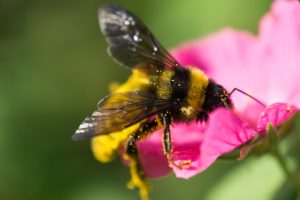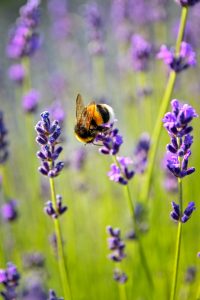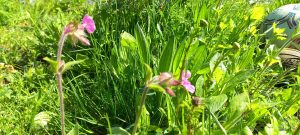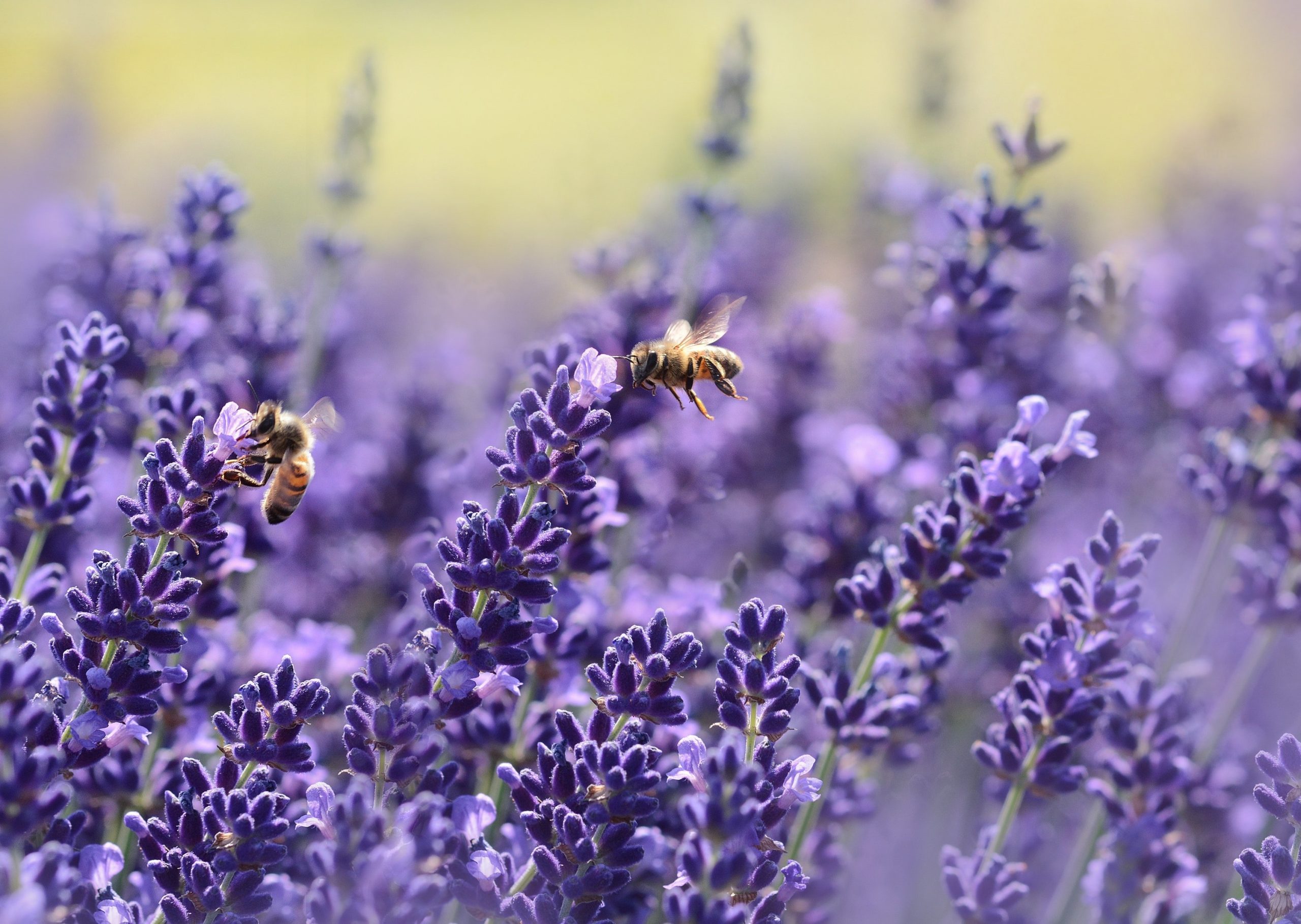There are many reasons why it is a good idea to attract bees to your garden. Bees are a vital part of the ecosystem as they play a crucial role in pollination. Without bees, many of the fruits and vegetables that we love wouldn’t exist. However, the population of bees has been declining in recent years, which is why it is essential to support them by planting pollinator and bee-friendly plants in your garden.
At Genesis Gardens, we’re passionate about creating gardens which attract bees and other pollinators, as well as wildlife in general.
In this guide, we’ll explain how to choose native bee-friendly plants and flowers for your garden.
Are Bees the Only Pollinators?
 No, bees are not the only pollinators! In the UK, there are many different types of pollinators, including butterflies, moths, hoverflies, and beetles. However, there is a worrying decline in the population of pollinators for a range of reasons.
No, bees are not the only pollinators! In the UK, there are many different types of pollinators, including butterflies, moths, hoverflies, and beetles. However, there is a worrying decline in the population of pollinators for a range of reasons.
Bees are generally considered to be the most important pollinators in the UK, responsible for pollinating a large number of crops and wildflowers. There are over 270 species of bees in the UK, including bumblebees, solitary bees, and honeybees.
Bumblebees are particularly important pollinators in the UK, as they are able to fly in cooler temperatures and lower light conditions, critical in early spring and late autumn when other bees are less active. Honeybees are also important pollinators, especially for crops such as fruit trees and oilseed rape.
Why are Native Plants Important?
At Genesis Gardens we are committed to sustainable and environmentally-friendly practices. So we regularly mention native plants in our posts, and with good reason. Native plants are better for your garden, for wildlife, and for the environment generally.
Native plants have evolved naturally to grow in a particular region and have adapted to the local climate and soil conditions. This makes them more resilient to local pests and diseases and provides food and habitat for native bees. Non-native plants may not provide the same nutritional benefits for bees, meaning they may less effective at supporting local bee populations.
Additionally, choosing native plants, sourced as locally as possible, is good environmental practice as it cuts down on the carbon footprint of your plants through transport and shipping.
How do you Choose Native Bee-Friendly Plants?
Here are our top tips for factors to consider when choosing plants to ensure they are bee-friendly, and provide you with a great garden:
Flower Shape and Colour
 Bees are attracted to flowers that are bright, fragrant, and have a simple shape that allows easy access to the nectar and pollen inside. Look for flowers that have a single, open bloom where you can easily see the inside of the flower, rather than those with multiple layers or petals that make it difficult for bees to access the nectar.
Bees are attracted to flowers that are bright, fragrant, and have a simple shape that allows easy access to the nectar and pollen inside. Look for flowers that have a single, open bloom where you can easily see the inside of the flower, rather than those with multiple layers or petals that make it difficult for bees to access the nectar.
In terms of colour, bees are most attracted to flowers that are purple, purple, and yellow – because they can see these colours more clearly. Red and orange flowers are less attractive to bees but can still be useful in providing variety in your garden, so don’t remove them!
Flowering Season
Bees need a consistent supply of nectar and pollen throughout the growing season, so choosing plants that bloom at different times of the year is important. Aim to have a mix of early, mid, and late-season blooming plants to ensure a steady supply of food for bees.
In our follow-on blog, we will look at the best native plants to choose to ensure you are providing bees and pollinators with a source of food right through the growing season.
Plant Diversity
Plant diversity is important for supporting a range of bee species, as different bees have different preferences for flower shape, size, and colour. Aim to have a mix of plants with different flower shapes and colours to provide a diverse range of food sources for bees.
What else should you do to attract Bees to your garden?
In addition to choosing bee-friendly plants, there are a few other things you can do to attract bees to your garden. Many of these are simple actions we have mentioned before in our advice about creating wildlife and bird-friendly gardens.
Make sure there is a source of water: Bees need water to drink and to regulate the temperature in their hives. Provide a shallow dish of water, such as a bird bath, with a few stones or twigs for the bees to land on.
Create a habitat: Bees need a place to nest and rest. Leave some areas of bare soil, or create a nesting habitat by drilling holes in a piece of wood or providing a bee house.
Avoid using pesticides: Pesticides can be harmful to bees, so avoid using them in your garden. Instead, use natural pest control methods, such as companion planting and handpicking pests.
Provide a variety of plant heights: Bees are attracted to plants of different heights, so provide a range of plant heights in your garden. This will also create a more interesting and diverse garden.
Ensure there is enough sunlight: Most bee-friendly plants require full sunlight to grow and bloom. Ensure that your garden has enough sunlight for the plants to thrive.
 Consider Wildflower Turf: creating a wild corner of your garden is a great way to attract bees and pollinators. You can simply let an area become a little wild, and sow some wildflower seeds, but we recommend Wildflower Turf for an instant result. Check out our post: Five beautiful reasons to create a wildflower meadow or use wildflower turf in your garden in 2023
Consider Wildflower Turf: creating a wild corner of your garden is a great way to attract bees and pollinators. You can simply let an area become a little wild, and sow some wildflower seeds, but we recommend Wildflower Turf for an instant result. Check out our post: Five beautiful reasons to create a wildflower meadow or use wildflower turf in your garden in 2023
Get Busy creating your Bee-friendly garden!
These small but important actions, alongside native pollinator-friendly plants, will help you to create a welcoming habitat for bees. This in turn will help support their populations, something critically important.
This post is part one of our short series relating to Bees and Pollinators. In the next post, we will look in detail at specific bee-attracting plants for UK gardens.

